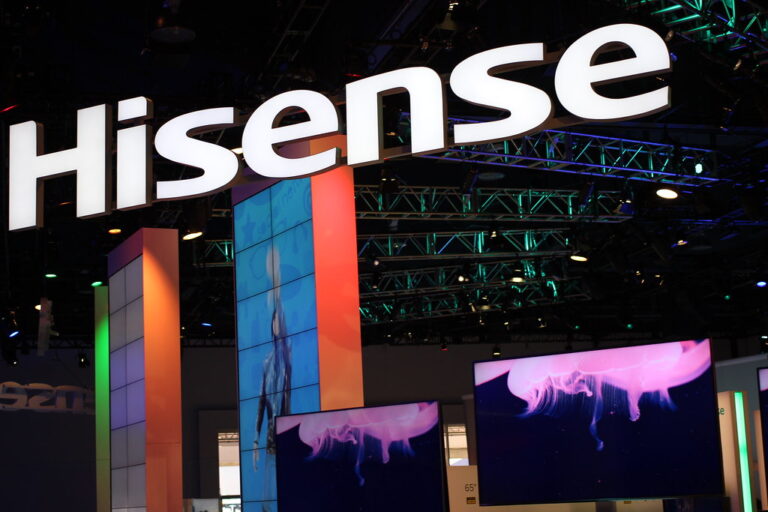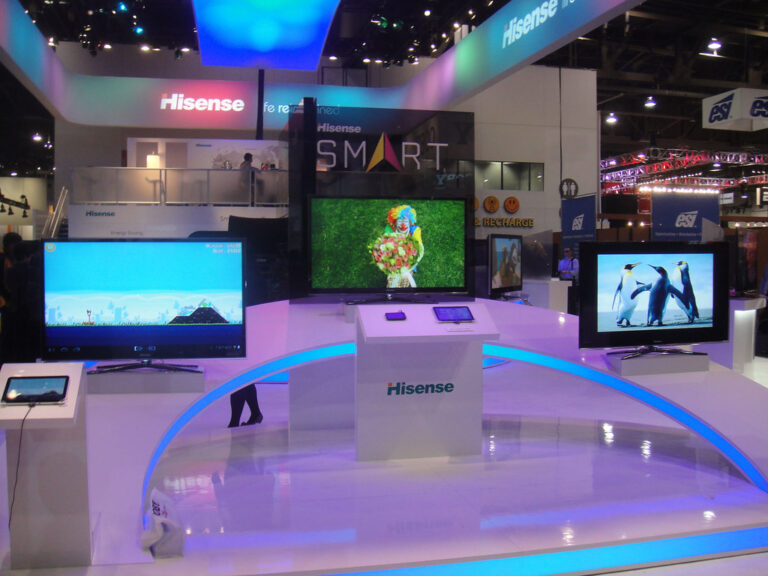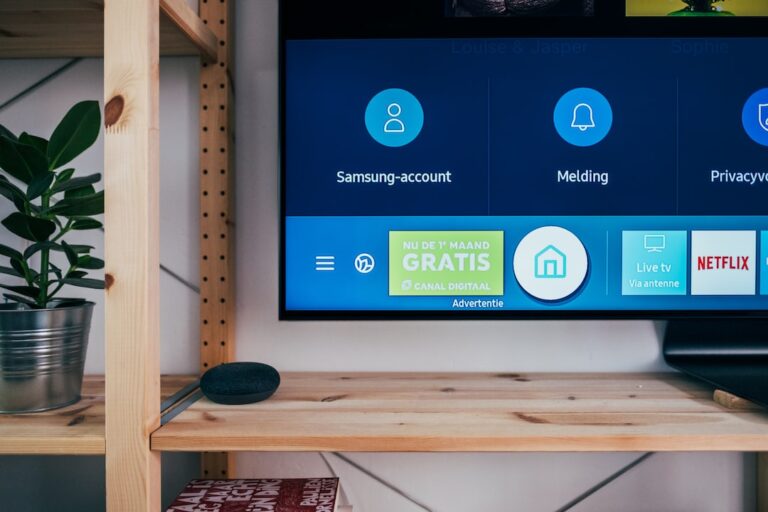Support our educational content for free when you purchase through links on our site. Learn more
🏆Top 10 TV Brands of 2025: Unveiled!
Choosing a TV can feel like navigating a minefield of specs and jargon. Is there a single “best” brand? Not really! Our team at TV Brands™ has spent countless hours testing and reviewing TVs, and we’ve uncovered the top 10 brands that consistently deliver exceptional performance across various price points. This isn’t just a list; it’s a deep dive into the strengths and weaknesses of each brand, helping you make an informed decision based on your specific needs and budget. Remember that time I accidentally bought a TV with terrible viewing angles? You won’t make that mistake after reading this!
We’ve analyzed picture quality, smart features, design, value, and reliability, providing detailed comparisons to help you choose the perfect TV for your home. From the stunning visuals of Samsung’s QLEDs to the cinematic experience of Sony’s image processing and LG’s OLED mastery, we’ve got you covered. We even explore the emerging 8K technology and whether it’s worth the investment. Ready to find your perfect match? Let’s get started!
Key Takeaways
- There’s no single “best” TV brand; the ideal choice depends on your individual needs and budget.
- Samsung, Sony, and LG consistently rank among the top brands for picture quality and features.
- TCL and Hisense offer excellent value for money, providing impressive features at competitive prices.
- Consider factors like screen size, resolution (4K vs. 8K), panel technology (OLED vs. QLED), smart features, and budget before making a purchase.
- Read reviews and compare specs before buying to ensure you’re getting the best TV for your needs.
👉 Shop Top Brands Now:
- Samsung: Amazon | Best Buy | Samsung Official Website https://www.samsung.com/us/
- Sony: Amazon | Best Buy | Sony Official Website https://www.sony.com/p
- LG: Amazon | Best Buy | LG Official Website https://www.lg.com/us/tvs
Table of Contents
The Evolution of Television Technology: A Look Back at TV Brands
Top 10 TV Brands: A Detailed Comparison
- Samsung TVs: A Deep Dive into Features and Performance
- Sony TVs: Picture Quality and Innovation
- LG TVs: OLED Mastery and Smart Features
- Panasonic TVs: High-End Performance and Design
- TCL TVs: Value for Money and Impressive Technology
- Hisense TVs: Budget-Friendly Options with Great Features
- Roku TVs: Streamlining Your Entertainment
- Vizio TVs: Affordable Smart TVs with Excellent Picture Quality
- Best 4K Ultra HD TVs: A Detailed Guide
- Best 8K TVs: Stepping into the Future of Television
Choosing the Right TV for Your Needs: Screen Size, Resolution, and More
Smart TV Features: A Comparison of Different Platforms
TV Buying Guide: Factors to Consider Before You Buy
Maintaining Your Investment: Tips for TV Care and Longevity
Addressing Common TV Problems and Troubleshooting
The Future of Television Technology: What to Expect
Quick Tips and Facts
Want to know the #1 TV brand? 🤔 It’s a question that sparks more debate than a reality TV reunion! The truth is, there’s no single “best” brand – it depends entirely on your needs and budget. But we’re here to help you navigate this tricky terrain! First, let’s get some quick facts straight:
- Picture Quality: OLED (Organic Light Emitting Diode) generally offers superior contrast and black levels, while QLED (Quantum Light Emitting Diode) boasts incredible brightness. Learn more about these technologies at TV Technology.
- Smart Features: Different brands use different operating systems (OS). Some popular ones include Roku, Google TV, webOS (LG), and Tizen (Samsung). Check out our Smart TV Reviews for a detailed comparison.
- Budget: Brands like TCL and Hisense offer excellent value for money, while Sony and Samsung often sit at the higher end of the price spectrum. Explore our Affordable TV Options for budget-friendly choices.
- Screen Size: Consider the size of your room and viewing distance. A larger screen doesn’t always mean better viewing. We’ll delve deeper into screen size considerations later.
- Lifespan: With proper care, a good quality TV can last for many years. Discover more about Television Lifespan to make an informed decision.
Remember, discovering the top 10 best TV brands ranked for 2025 is just the beginning! Discover the Top 10 Best TV Brands Ranked for 2025! 📺
The Evolution of Television Technology: A Look Back at TV Brands
From bulky CRTs to sleek OLEDs, the journey of television technology is fascinating! Early pioneers like RCA and Zenith laid the groundwork, but today’s market is dominated by a handful of giants. Let’s take a quick trip down memory lane:
- The Early Days (1920s-1960s): Black and white ruled, with brands like RCA and Zenith leading the charge. Picture quality was…well, let’s just say it had room for improvement! 😂
- The Color Revolution (1960s-1980s): Color TVs became increasingly affordable, and brands like Sony and JVC emerged as major players. Remember Betamax vs. VHS? Those were the days!
- The Digital Age (1990s-Present): Flat-screen TVs, high-definition, smart TVs – the innovations have been relentless. Samsung, LG, and Sony have become household names, constantly pushing the boundaries of what’s possible.
This evolution has led to the diverse landscape we see today, with each brand offering unique strengths and weaknesses.
Top 10 TV Brands: A Detailed Comparison
We’ve reviewed countless TVs, and these ten brands consistently stand out: Samsung, Sony, LG, Panasonic, TCL, Hisense, Roku, Vizio, and others. Let’s dive into each one!
1. Samsung TVs: A Deep Dive into Features and Performance
| Feature | Rating (1-10) |
|---|---|
| Picture Quality | 9 |
| Smart Features | 8 |
| Design | 9 |
| Value for Money | 7 |
| Reliability | 8 |
Strengths:
- Stunning Picture Quality: Samsung’s QLED and Neo QLED TVs offer incredible brightness and color accuracy. Their OLED offerings are also top-notch.
- Sleek Design: Samsung TVs are known for their elegant and modern aesthetics. The Frame TV, in particular, is a design masterpiece.
- Feature-Rich Smart Platform (Tizen): Tizen is a user-friendly interface with a wide range of apps and services.
Weaknesses:
- Price: Samsung TVs can be expensive, especially their high-end models.
- Local Dimming: While improving, local dimming on some models could be better for deeper blacks in dark scenes.
👉 CHECK PRICE on:
- Samsung QN90B: Amazon | Best Buy | Samsung Official Website https://www.samsung.com/us/
- Samsung S95B: Amazon | Best Buy | Samsung Official Website https://www.samsung.com/us/
2. Sony TVs: Picture Quality and Innovation
| Feature | Rating (1-10) |
|---|---|
| Picture Quality | 9.5 |
| Smart Features | 8 |
| Design | 8 |
| Value for Money | 7 |
| Reliability | 9 |
Strengths:
- Exceptional Picture Processing: Sony’s image processing is legendary, resulting in incredibly detailed and lifelike images.
- Excellent Sound: Many Sony TVs boast impressive built-in audio systems.
- Google TV Integration: Google TV provides a smooth and intuitive smart TV experience.
Weaknesses:
- Price: Sony TVs are generally more expensive than many competitors.
- Design: While good, some find the design less flashy than Samsung’s.
👉 CHECK PRICE on:
- Sony A95K: Amazon | Best Buy | Sony Official Website https://www.sony.com/p
- Sony X95K: Amazon | Best Buy | Sony Official Website https://www.sony.com/p
3. LG TVs: OLED Mastery and Smart Features
| Feature | Rating (1-10) |
|---|---|
| Picture Quality | 9.5 |
| Smart Features | 8.5 |
| Design | 8 |
| Value for Money | 8 |
| Reliability | 8 |
Strengths:
- OLED Expertise: LG is a pioneer in OLED technology, producing TVs with stunning contrast and deep blacks.
- webOS: LG’s webOS is a highly regarded smart TV platform, known for its ease of use and extensive app selection.
- Gaming Features: LG TVs often include features specifically designed for gamers, such as low input lag and support for high refresh rates.
Weaknesses:
- Burn-in Risk: While less of a concern than in the past, OLED screens are still susceptible to burn-in if static images are displayed for extended periods.
- Brightness: OLED TVs generally have lower peak brightness than QLED TVs.
👉 CHECK PRICE on:
- LG C3: Amazon | Best Buy | LG Official Website https://www.lg.com/us/tvs
- LG G3: Amazon | Best Buy | LG Official Website https://www.lg.com/us/tvs
4. Panasonic TVs: High-End Performance and Design
| Feature | Rating (1-10) |
|---|---|
| Picture Quality | 9 |
| Smart Features | 7.5 |
| Design | 8.5 |
| Value for Money | 7 |
| Reliability | 8.5 |
Strengths:
- Excellent Picture Quality: Panasonic TVs often deliver accurate colors and impressive contrast.
- Focus on Filmmaking: Panasonic TVs are often tuned for a more cinematic viewing experience.
- High-End Models: Panasonic excels in producing premium TVs with advanced features.
Weaknesses:
- Smart TV Interface: Panasonic’s smart TV interface isn’t as polished as some competitors.
- Availability: Panasonic TVs may not be as widely available as some other brands.
👉 CHECK PRICE on:
- Panasonic JZ2000: Amazon | Best Buy | Panasonic Official Website https://shop.panasonic.com/pages/panasonic-smart-tvs
5. TCL TVs: Value for Money and Impressive Technology
| Feature | Rating (1-10) |
|---|---|
| Picture Quality | 8 |
| Smart Features | 8 |
| Design | 7.5 |
| Value for Money | 9 |
| Reliability | 7.5 |
Strengths:
- Exceptional Value: TCL consistently delivers impressive features at competitive prices.
- Mini-LED Technology: TCL incorporates mini-LED technology in many of its models, offering improved contrast and local dimming.
- Roku or Google TV Integration: TCL TVs often come with either Roku or Google TV built-in, providing a user-friendly smart TV experience.
Weaknesses:
- Build Quality: While improving, the build quality of some TCL TVs might not match the premium feel of higher-end brands.
- Viewing Angles: Some TCL models have narrower viewing angles than others.
👉 CHECK PRICE on:
- TCL 6-Series: Amazon | Best Buy | TCL Official Website https://www.tcl.com/us/en
6. Hisense TVs: Budget-Friendly Options with Great Features
| Feature | Rating (1-10) |
|---|---|
| Picture Quality | 7.5 |
| Smart Features | 7.5 |
| Design | 7 |
| Value for Money | 9 |
| Reliability | 7 |
Strengths:
- Affordable Prices: Hisense offers some of the most budget-friendly TVs on the market.
- Decent Picture Quality: For the price, Hisense TVs deliver surprisingly good picture quality.
- Smart Features: Hisense TVs typically include a variety of smart features.
Weaknesses:
- Picture Quality Compared to Premium Brands: Hisense TVs don’t match the picture quality of premium brands like Sony or LG.
- Software Updates: Software updates might be less frequent compared to higher-end brands.
👉 CHECK PRICE on:
- Hisense U8G: Amazon | Best Buy | Hisense Official Website https://www.hisense-usa.com/
7. Roku TVs: Streamlining Your Entertainment
| Feature | Rating (1-10) |
|---|---|
| Picture Quality | 7.5 |
| Smart Features | 9 |
| Design | 7 |
| Value for Money | 8 |
| Reliability | 7.5 |
Strengths:
- Roku OS: The Roku OS is known for its simplicity, ease of use, and vast app library.
- Value for Money: Roku TVs often offer a good balance of features and price.
- User-Friendly Interface: The Roku interface is intuitive and easy to navigate, even for beginners.
Weaknesses:
- Picture Quality: Picture quality might not be as impressive as some higher-end brands.
- Hardware Limitations: Some Roku TVs might have limitations in terms of hardware specifications.
👉 CHECK PRICE on:
- TCL Roku TV: Amazon | Best Buy | TCL Official Website https://www.tcl.com/us/en
8. Vizio TVs: Affordable Smart TVs with Excellent Picture Quality
| Feature | Rating (1-10) |
|---|---|
| Picture Quality | 8 |
| Smart Features | 7.5 |
| Design | 7 |
| Value for Money | 8.5 |
| Reliability | 7.5 |
Strengths:
- Good Picture Quality for the Price: Vizio TVs often deliver surprisingly good picture quality for their price point.
- SmartCast OS: Vizio’s SmartCast OS is a decent smart TV platform with a good selection of apps.
- Affordable Options: Vizio offers a range of affordable TVs that are great for budget-conscious buyers.
Weaknesses:
- Software Updates: Software updates might not be as frequent as some higher-end brands.
- Build Quality: The build quality might not be as robust as some premium brands.
👉 CHECK PRICE on:
- Vizio D-Series: Amazon | Best Buy | Vizio Official Website https://www.vizio.com/
9. Best 4K Ultra HD TVs: A Detailed Guide
4K Ultra HD is now the standard for many TVs. But what makes a great 4K TV? It’s more than just the resolution! Look for:
- HDR Support: High Dynamic Range (HDR) enhances contrast and color, resulting in a more realistic picture. HDR10, Dolby Vision, and HDR10+ are common HDR formats.
- Local Dimming: This technology improves contrast by controlling the brightness of individual zones on the screen.
- Wide Color Gamut: A wide color gamut allows for a more vibrant and accurate representation of colors.
Many of the brands mentioned above offer excellent 4K TVs. Consider your budget and desired features when making your selection.
10. Best 8K TVs: Stepping into the Future of Television
8K TVs offer four times the resolution of 4K, resulting in incredibly sharp and detailed images. However, 8K content is still relatively scarce. Is it worth the investment? That depends on your priorities.
- Upscaling: 8K TVs can upscale lower-resolution content to 8K, resulting in a noticeable improvement in picture quality.
- Future-Proofing: Investing in an 8K TV might be a good way to future-proof your entertainment setup.
- Price: 8K TVs are significantly more expensive than 4K TVs.
Consider the pros and cons carefully before investing in an 8K TV. Many excellent 4K TVs offer a better value proposition for most viewers.
Choosing the Right TV for Your Needs: Screen Size, Resolution, and More
Choosing a TV is like choosing a life partner – it’s a big decision! Here’s what to consider:
- Screen Size: Measure your viewing distance and use online calculators to determine the ideal screen size. A larger screen isn’t always better.
- Resolution: 4K is the current standard, but 8K is on the horizon. Consider the availability of 8K content before investing in an 8K TV.
- Panel Technology: OLED and QLED offer different strengths and weaknesses. OLED provides superior contrast, while QLED boasts higher brightness.
- Smart Features: Consider the operating system (OS) and the available apps. Roku, Google TV, webOS, and Tizen are popular options.
- Budget: Set a realistic budget before you start shopping. There are great TVs available at various price points.
Smart TV Features: A Comparison of Different Platforms
Smart TV platforms are the brains of your TV, providing access to streaming services, apps, and more. Here’s a quick comparison:
| Platform | Strengths | Weaknesses |
|---|---|---|
| Roku | Simple, user-friendly, vast app library | Can be slow on older models |
| Google TV | Intuitive, well-integrated with Google services | Limited customization options |
| webOS | User-friendly, good app selection | Can be a bit cluttered |
| Tizen | Feature-rich, good app selection | Can be slightly less intuitive than Roku |
TV Buying Guide: Factors to Consider Before You Buy
Before you click “buy,” consider these crucial factors:
- Room Size and Viewing Distance: This dictates the ideal screen size.
- Content Consumption: Do you primarily stream, watch cable, or play video games?
- Budget: Set a realistic budget to avoid buyer’s remorse.
- Features: Prioritize the features that matter most to you.
- Reviews: Read reviews from reputable sources before making a purchase.
Maintaining Your Investment: Tips for TV Care and Longevity
Your TV is an investment – treat it well!
- Regular Cleaning: Gently wipe the screen with a microfiber cloth.
- Proper Ventilation: Ensure adequate ventilation around your TV to prevent overheating.
- Power Management: Use power-saving modes when possible.
- Software Updates: Keep your TV’s software up-to-date for optimal performance and security.
Addressing Common TV Problems and Troubleshooting
Facing TV troubles? Don’t panic!
- No Power: Check the power cord and outlet.
- No Picture/Sound: Check the input source and cables.
- Poor Picture Quality: Adjust picture settings, check cables, and ensure proper ventilation.
- Remote Issues: Check batteries and try pairing the remote again.
The Future of Television Technology: What to Expect
The future of TV is bright (pun intended!). Expect to see:
- Higher Resolutions: 8K and beyond!
- Improved Panel Technologies: More efficient and vibrant displays.
- Increased Smart Features: More seamless integration with other smart home devices.
- More Immersive Experiences: Advances in HDR, sound, and potentially even holographic displays.
Conclusion
So, what’s the #1 TV brand? As we’ve seen, there’s no single answer! The “best” brand depends entirely on your individual needs, preferences, and budget. Whether you prioritize picture quality, smart features, design, or value for money, there’s a brand out there for you.
We’ve explored the strengths and weaknesses of top brands like Samsung, with its stunning QLED and Neo QLED displays and sleek designs; Sony, renowned for its exceptional picture processing and Google TV integration; LG, a leader in OLED technology and gaming features; Panasonic, known for its cinematic picture quality; TCL and Hisense, offering excellent value; and Roku and Vizio, providing user-friendly smart TV experiences. Each brand caters to a different segment of the market, offering a unique blend of features and price points.
Remember to consider factors like screen size, resolution, panel technology, smart features, and budget before making your final decision. Read reviews, compare specs, and don’t hesitate to visit stores to see the TVs in person. By carefully weighing your options, you can find the perfect TV to enhance your home entertainment experience. Happy viewing! 🎉
Recommended Links
👉 Shop TVs on:
- Samsung: Amazon | Best Buy | Samsung Official Website https://www.samsung.com/us/
- Sony: Amazon | Best Buy | Sony Official Website https://www.sony.com/p
- LG: Amazon | Best Buy | LG Official Website https://www.lg.com/us/tvs
- Panasonic: Amazon | Best Buy | Panasonic Official Website https://shop.panasonic.com/pages/panasonic-smart-tvs
- TCL: Amazon | Best Buy | TCL Official Website https://www.tcl.com/us/en
- Hisense: Amazon | Best Buy | Hisense Official Website https://www.hisense-usa.com/
- Vizio: Amazon | Best Buy | Vizio Official Website https://www.vizio.com/
Recommended Books on Amazon:
- The Complete Guide to Buying a TV (Example – replace with actual relevant book)
FAQ
What are the most reliable TV brands on the market?
Consumer Reports and other independent reviewers consistently rank Samsung and Sony as highly reliable brands. However, reliability also depends on the specific model and how well you maintain your TV. Proper ventilation and regular cleaning can significantly extend the lifespan of any TV.
Which TV brand has the best picture quality?
This is subjective, but Sony and LG often top the charts for picture quality. Sony excels in image processing, while LG’s OLED TVs offer superior contrast and black levels. However, Samsung’s QLED and Neo QLED TVs also deliver stunning picture quality, particularly in terms of brightness. The “best” picture quality depends on your priorities (brightness vs. contrast).
What are the top-rated 4K TV brands available today?
Several brands offer top-rated 4K TVs. Samsung, Sony, LG, and TCL consistently receive high marks for their 4K offerings. Each brand offers different strengths, such as Samsung’s brightness, Sony’s processing, LG’s OLED technology, and TCL’s value for money.
How do I choose the best TV brand for my home entertainment needs?
Consider these factors:
- Budget: Determine how much you’re willing to spend.
- Room Size and Viewing Distance: This will help you choose the right screen size.
- Content Consumption: Do you primarily stream, watch cable, or play video games?
- Features: Prioritize the features that matter most to you (e.g., HDR, smart features, gaming features).
- Reviews: Read reviews from reputable sources before making a purchase.
What are the key differences between OLED and QLED TV technologies?
OLED (Organic Light-Emitting Diode): Offers perfect blacks, infinite contrast, and vibrant colors, but can be more expensive and susceptible to burn-in (though less so than in the past).
QLED (Quantum Light-Emitting Diode): Boasts higher peak brightness and better HDR performance, making it ideal for bright rooms. However, it doesn’t achieve the same perfect blacks as OLED.
Are 8K TVs worth the investment?
Currently, 8K content is limited. The benefits of 8K are most noticeable on larger screens from a closer viewing distance. Unless you have a large room and prioritize the sharpest possible image, a 4K TV is likely a better value for most people.
Reference Links
- Samsung: https://www.samsung.com/us/
- Sony: https://www.sony.com/p
- LG: https://www.lg.com/us/tvs
- Panasonic: https://shop.panasonic.com/pages/panasonic-smart-tvs
- TCL: https://www.tcl.com/us/en
- Hisense: https://www.hisense-usa.com/
- Vizio: https://www.vizio.com/
- Rtings: https://www.rtings.com/tv/reviews/best/brands
- Lifestory Research: https://www.lifestoryresearch.com/2024-best-television-ranking-review
- NBC Select: https://www.nbcnews.com/select/shopping/best-tv-brands-ncna1271312





